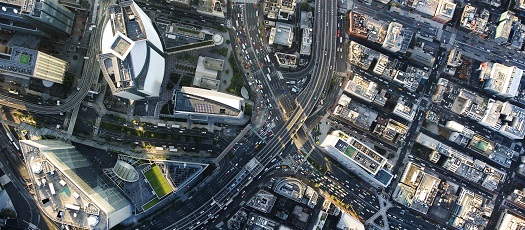By Richard Harris, solutions director for Xerox International Transportation and Government Group
The number of vehicles on our roads is increasing every year. The resulting congestion affects commuting time, air quality and wasted fuel — and is taking its toll on taxpayers. The last few years have seen great advancements in transportation technology that combine data collection, processing, visualization and data analysis – all of which can make our cities smarter and improve mobility.
Here’s a look at some of the solutions that we will display at trade shows this year. Taken together, these solutions help make transportation quicker, cleaner, and safer.
High Occupancy Vehicles (HOV) lanes allow more people to move along the highway quicker without the need to expand existing roads or build new ones. Single Occupancy Vehicles may also use these lanes — if they pay a toll. However, without the right technology, these rules are hard to enforce and require a lot of manpower. Imaging systems that use video technology, and other sensors, capture data and observe driver behavior, which reduces the need for enforcement officers at the roadside. When a violation is detected, the information can be reported to the relevant enforcement agency in real time so an officer can visually confirm the information and potentially issue a citation.
The tolls can be adjusted to match demand. The data collected by these technologies helps us see how well the system is working and where it needs to be tweaked. This technology is now for sale in the U.S., and is expected to boost the introduction of HOV lanes in Europe and elsewhere.

All Electronic Toll booths reduce operating and capital costs for transit authorities, and help drivers save fuel, reduce emissions, and get to their destinations quicker. Our systems automatically identify cars, determines if they are part of the tolling solution, and debits their accounts accordingly. The system sends notices or fines to owners who have not registered their cars with the tolling solution. This is how we help transit authorities save manpower, collect tolls and reduce congestion.
Collecting public transit fares isn’t limited to the coin box on the bus anymore. Xerox handles more than 200 million public transport tickets every day, and the Xerox Atlas back office system provides the hidden, but essential, engine to manage these activities. It allows riders pay with cash, smart cards, pay-by-phone or other methods.
Parking solutions can be used in off-street situations such as hospitals, airports and shopping centers, while on-street parking and enforcement means that parking meters may eventually become a thing of the past.
- Our Si-Dem software manages parking and traffic. It handles evolving enforcement practices and manages parking tickets, permits, as well as wheel clamping and removal.
- Si-Log software is for handheld parking enforcement, which is easy to use and helps manage staff in the field. It allows parking enforcement officers to issue and print tickets and notices on the spot.
Connected cars promise to bring even more changes, which is why we’re a member of the Leadership Circle at the University of Michigan Transportation Research Institute Mobility Transformation Center. We will help shape the latest developments in connected cars, and develop new services that will make transportation smarter, smoother, safer and simpler.
All of these innovations can lead to a more efficient way of life, and — in some cases — can even save lives. These solutions, and more, will be displayed at transportation industry trade shows in Europe. We look forward to seeing you at the ITS in Europe Congress in Helsinki; Parkex in London; and Transports Public in Paris .



